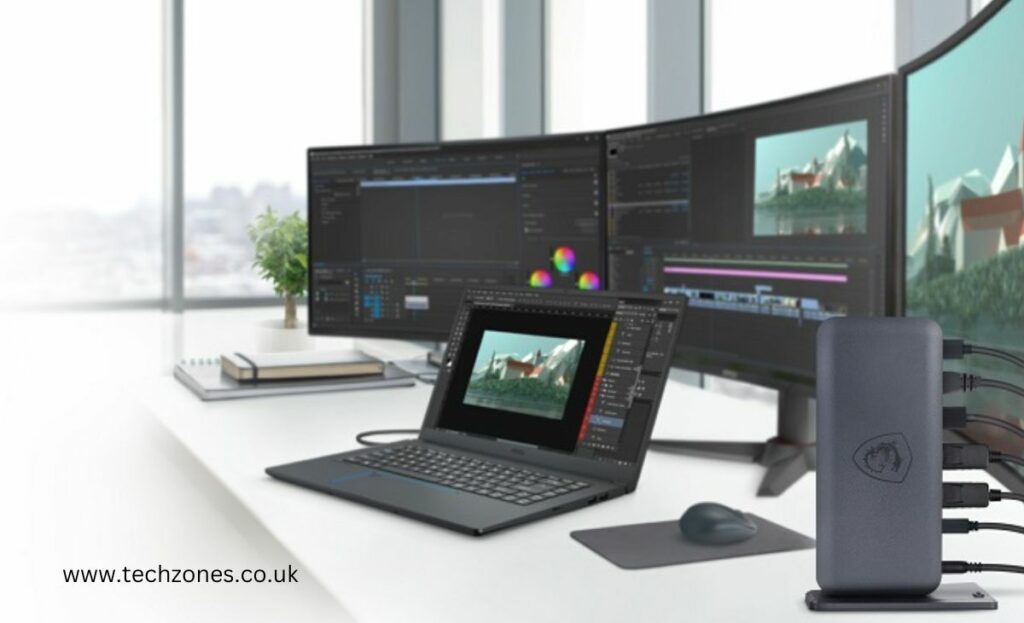Welcome to the world of enhanced productivity and immersive computing! If you’re wondering how to set up three monitors on your laptop, you’ve come to the right place. Whether you’re a gamer, a designer, or just someone who needs to multitask like a pro, this guide by Tech Zones will walk you through the steps to turn your laptop into a triple-screen powerhouse.
Why Use Three Monitors?
Before we dive into the technical details, let’s talk about why you might want to set up three monitors in the first place.
Increased Productivity
With three screens, you can have multiple applications open simultaneously without constantly switching between them. This is a game-changer for professionals who use software like Photoshop, AutoCAD, or video editing tools.
Gaming Nirvana
Gamers can enjoy an incredibly immersive gaming experience with an extended field of view. It’s like having a panoramic view of your virtual world.
Stock Trading
Day traders and stock enthusiasts often use multiple monitors to keep an eye on different stocks, news feeds, and financial tools all at once.
Presentations
If you’re giving a presentation, having three monitors can make you look like a tech wizard. You can have your presentation on one screen, notes on another, and a live demo on the third.
Setting up three monitors: step-by-step Procedure
Now that you’re convinced of the benefits, let’s get into the nitty-gritty of setting up three monitors on your laptop.
Step 1: Check Your Laptop’s Graphics Capabilities
Not all laptops are created equal, and not all of them can support three external monitors. The first thing you need to do is check your laptop’s graphics card and the number of video outputs it has.
Most modern laptops come with integrated graphics, which may not support three monitors. If you’re serious about a triple-monitor setup, consider a laptop with a dedicated graphics card like an NVIDIA or AMD GPU. These are more likely to have the necessary horsepower.
Step 2: Gather Your Hardware
Setting up three monitors on a laptop requires some additional hardware:
- Monitors: Obviously, you need three monitors. Make sure they all have compatible connectors with your laptop. HDMI, DisplayPort, and USB-C are common options.
- Docking Station: To connect multiple monitors to your laptop, a docking station is often necessary. It acts as a hub, providing additional USB ports, video outputs, and sometimes even power delivery to your laptop.
- Cables: Get the right cables to connect your laptop to the docking station and the monitors. Ensure they match the connectors on both ends.
- Monitor Mounts: If you want a clean and organized setup, consider getting monitor mounts or a monitor stand that can hold all three displays.
Step 3: Connect Your Monitors
Now comes the fun part – connecting everything. Here’s a simplified guide to help you through it:
- Connect the Docking Station: Plug the docking station into your laptop’s USB-C, Thunderbolt, or another compatible port.
- Connect Monitors to Docking Station: Use the appropriate cables to connect your monitors to the docking station. Ensure each monitor is recognized by your laptop as you connect them.
- Extend or Duplicate Displays: Depending on your operating system (Windows or macOS), go to display settings and choose whether you want to extend your desktop across all three monitors or duplicate the display.
- Arrange Your Monitors: Drag and drop the display icons in your settings to match the physical layout of your monitors. This ensures that your cursor moves naturally from one screen to the next.
Step 4: Configure Display Settings
Now that your monitors are physically connected, you’ll need to configure the display settings:
- Resolution: Set the resolution for each monitor. Make sure it matches the native resolution of the display for the best image quality.
- Orientation: Decide whether you want your monitors in landscape or portrait mode. This can be adjusted in display settings.
- Display Order: Arrange the monitors in the order that matches their physical layout. This ensures that windows and applications open on the correct screen.
Step 5: Test and Troubleshoot
Once you’ve configured your triple-monitor setup, it’s essential to test everything and troubleshoot any issues:
- Test All Monitors: Open applications and drag them across all three monitors to ensure they work seamlessly.
- Check Graphics Card Settings: Depending on your GPU, you may have additional settings to tweak. Check the control panel for your graphics card and make adjustments as needed.
- Update Drivers: Ensure your graphics drivers are up-to-date. Manufacturers often release driver updates that improve multi-monitor support.
- Check Power: Triple-monitor setups can be power-hungry. Make sure your laptop and docking station provide enough power for all displays.
Step 6: Enjoy Your Triple-Monitor Setup
Congratulations! You’ve successfully set up three monitors on your laptop. Now, you can enjoy the benefits of increased productivity, immersive gaming, or whatever you need this setup for.
If you are unable to do it by yourself, feel free to come to Laptop Repair London for professional assistance or repair services.
Conclusion
Setting up three monitors on a laptop might seem like a daunting task, but with the right hardware and a bit of patience, it’s entirely achievable. Whether you’re a professional looking to boost your productivity or a gamer seeking a more immersive experience, a triple-monitor or setup of two monitors to a laptop with an HDMI Port can take your computing to the next level. So, gather your equipment, follow the steps, and get ready to enjoy the expansive world of triple-screen computing.


